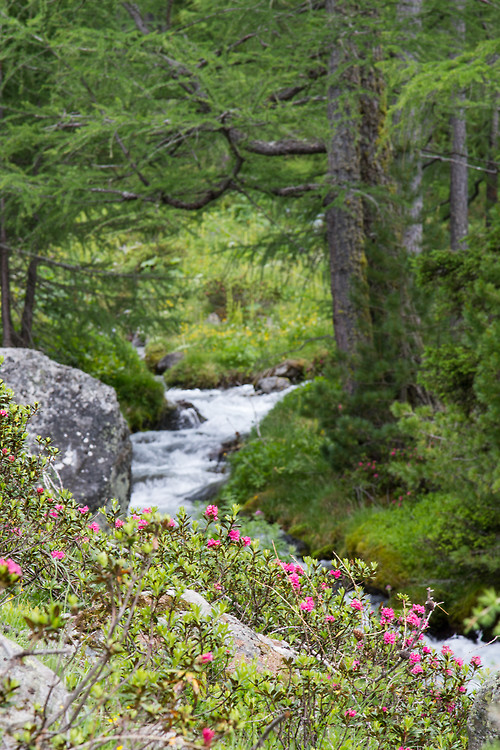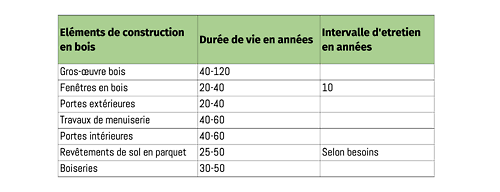A carbon sink in my house?
Alexia Schneider,If you are interested in the climate, you have probably heard the term 'carbon sink' or 'negative emissions'. While this concept is valuable in the case of a forest, it is not so simple in construction. Why is this so? Let's find out.

What is a carbon sink?
It is a "natural or artificial system for capturing and storing a significant amount of carbon dioxide (CO2), so as to limit its concentration in the atmosphere. 1 "By stabilising the amount of atmospheric CO2, carbon sinks influence the global climate, and thus all the components of the environment that depend on it." 2
This is a phenomenon that can be observed in forests in particular: trees photosynthesise and fix carbon in order to grow. Increasing the surface area of forests is therefore a strategy for 'removing' excess CO2 from the atmosphere in order to mitigate climate change. So far, so good. It remains to be seen how many hectares of forest would have to be planted to absorb enough CO2, but that is another debate.

Carbon storage in buildings
In the context of carbon footprints for buildings, it has been suggested that the carbon sink effect should be considered in calculations that include wood as a building material. Instead of just counting the CO2 emissions from the cutting, transport, processing and use of wood in the building, the amount of CO2 stored in the wood during its growth was taken into account.
CO2 emissions - Amount of CO2 stored = Total emissions
In the case of minimally processed products (raw wood, timber, etc.) the result is generally negative. This could imply that we could build anything we want out of wood, it will not harm the planet, on the contrary, it allows to store carbon!

Not so fast! In fact, timber used in construction is a fixed carbon stock, whereas if it had been left standing, it would continue to capture CO2. Moreover, using wood in construction only displaces a carbon stock that was previously in the forest onto a building site, from which we deduct the emissions linked to cutting, transport, processing, etc. So compared to leaving the forest alone, building with timber emits CO2 and does not store it, contrary to what one might have thought given the "negative emissions" announced.

Where we can start to take into account the phenomenon of 'carbon sinks' in construction is when the forest is managed responsibly. If a tree is replanted after a previous one has been cut down, the carbon stock continues to grow. It is therefore important to ensure the origin of the wood and to favour labels certifying sustainable forest management.
A question of rotation
If you have followed me this far, you may notice that there is one last step missing to really ensure that the carbon sink phenomenon is valid in our particular case. Indeed, the growth cycle of a tree until its exploitation, called "rotation", varies according to the species of wood but also according to the criteria of economy and productivity (there is indeed a tendency, in recent years, to reduce the totations compared to the "natural" cycle to increase the productivity of the forest, to the detriment of biodiversity). Therefore, in order for our timber to be climate neutral, it must remain in the building for at least one rotation, so that it can be permanently replaced, in terms of CO2 stock, by its successor in the forest.
For example, the French Environment and Energy Management Agency (ADEME) considers the carbon sink effect only in wooden elements included in objects that will last at least a century.5

In concrete terms, to enable our wooden elements to achieve the goal of a rotation, there are several strategies available to us:
- - Delay the replacement of wooden elements through regular non-destructive maintenance
- - Use shorter rotation species, adapted to the life span of the element for which they are used (see Table 3)
- - Extend the life cycle of wood by reusing or downcycling it to delay incineration and therefore the release of its carbon stock into the atmosphere.
As you can see, using virgin wood fibres to make disposable pallets is not carbon neutral, and even less with "negative emission" when considering the whole life cycle!
The interest of other bio-based materials

The "carbon sink" effect of wood in construction is therefore far from systematic, particularly because of its long rotation period. For certain uses, such as insulation, materials such as straw or hemp can very quickly benefit from the "carbon sink" effect because their rotation cycle is very short (one year).
The next time you hear "wood is climate neutral", you will remember that... "yes, but...!"